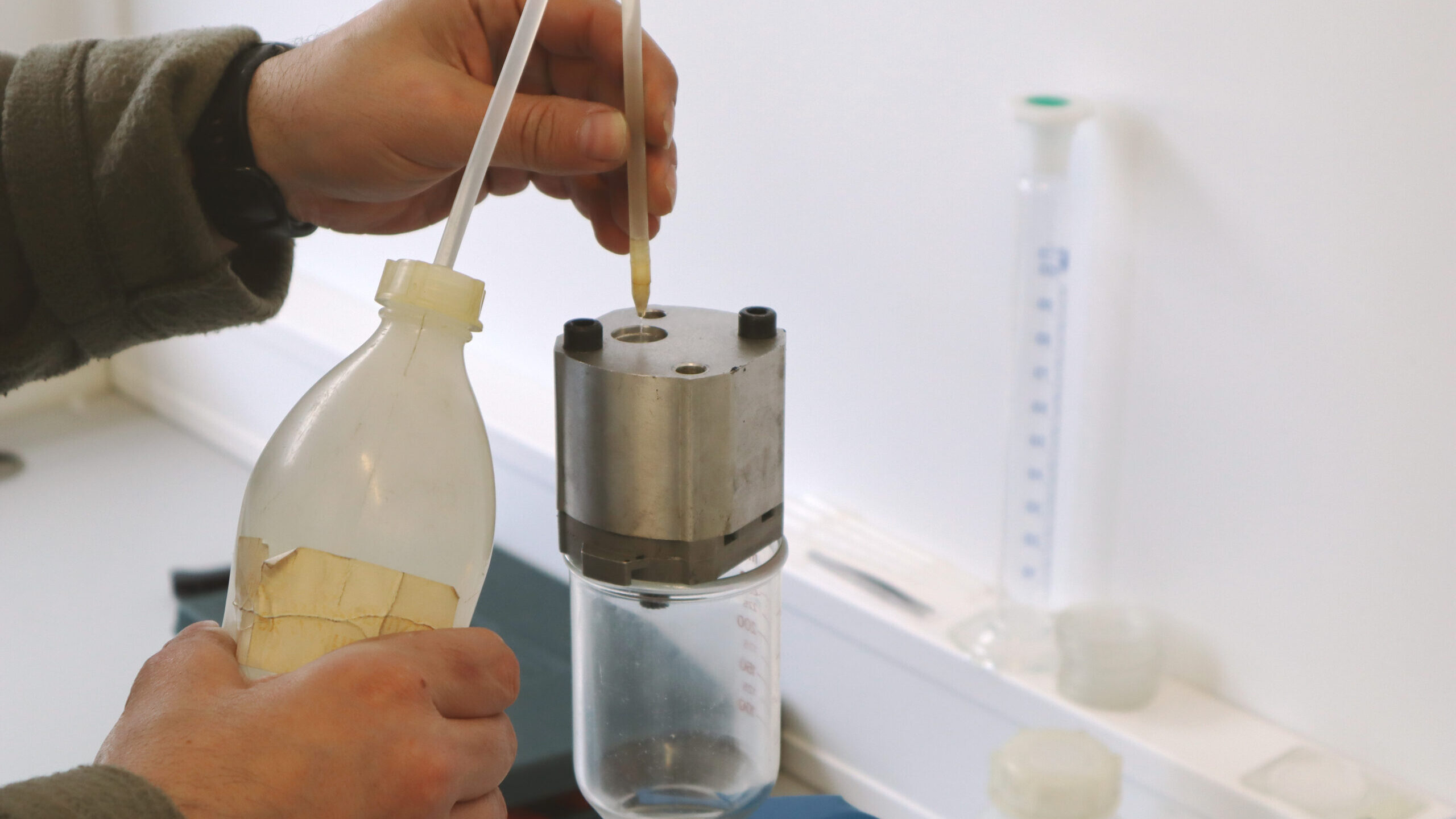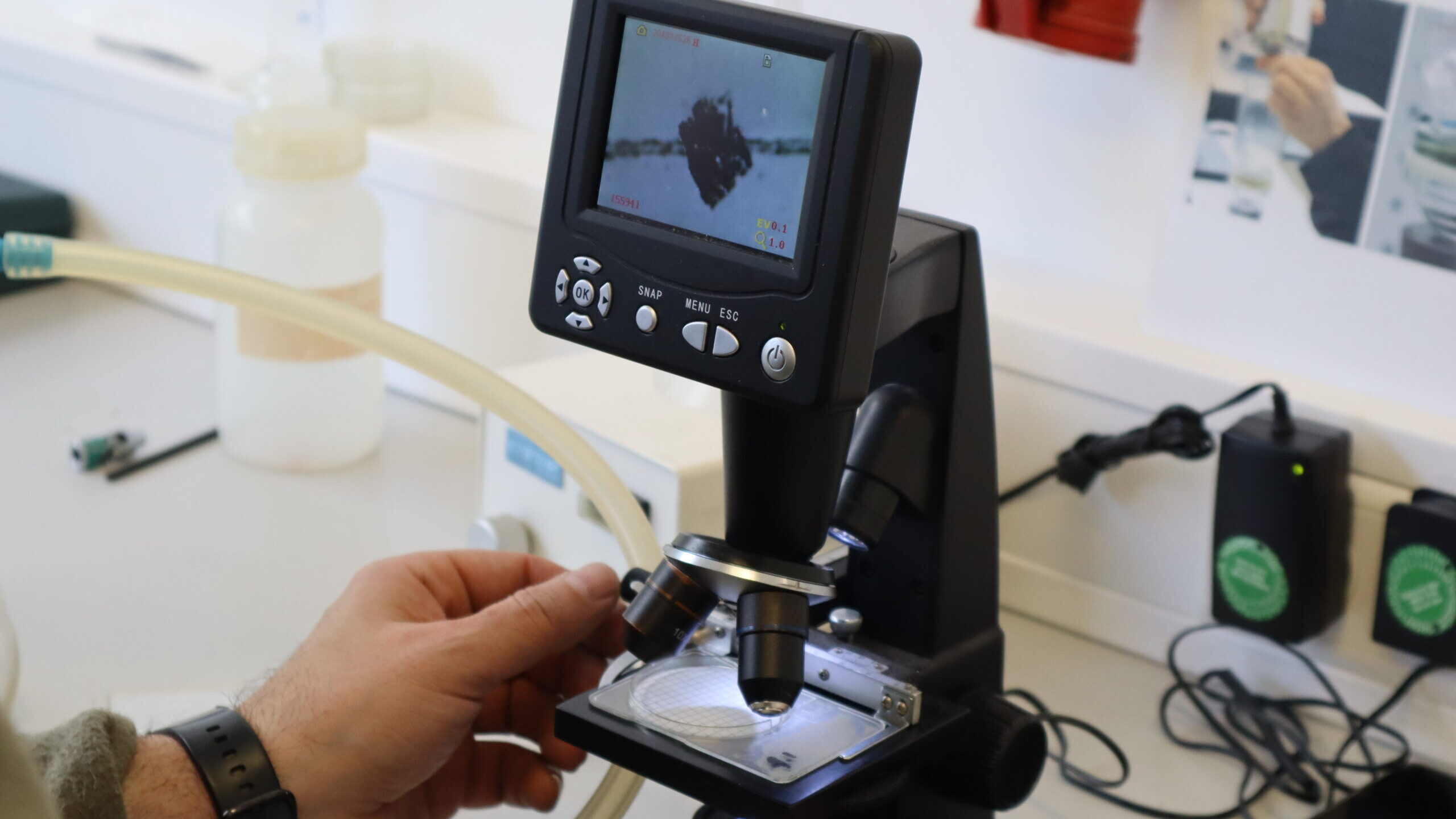



Cleanliness test at pumps
The process of a cleanliness test
After production, all pumps undergo a flushing process. Residues such as metal shavings can damage the pump if they remain behind. The flushing process / cleanliness test is a check performed by HTC to monitor the flushing process. This allows us to guarantee a longer lifespan.
During the cleanliness test, the pump is thoroughly flushed and the liquid is filtered. Then, the filtered liquid is examined under the microscope to assess the amount of particles (grit) that may have remained during production / flushing process.


Related wiki's
Hardness measurement
A smooth workday begins with well-functioning equipment, which not only increases work satisfaction but also enhances efficiency. However, a malfunctioning foot control of a tail lift can cause a lot of frustration. Fortunately, this can easily be prevented through a simple test. In this text, you’ll discover how we avoid such annoyances and make your workday run more smoothly.
Roughness measurement
Did you know that the roughness of a surface, such as on tail lifts, affects the life of the product? Smooth surfaces are less susceptible to external influences that cause corrosion, and are more wear-resistant. With our roughness measurements, we determine the state of the surface so that you can extend the life of your tail lift if necessary. Find out more here!
What is layer thickness?
Properly functioning machines require top-quality parts, especially if they are constantly exposed to external elements. Layer thickness measurement ensures the quality of chromed surfaces. Find out how it works here!